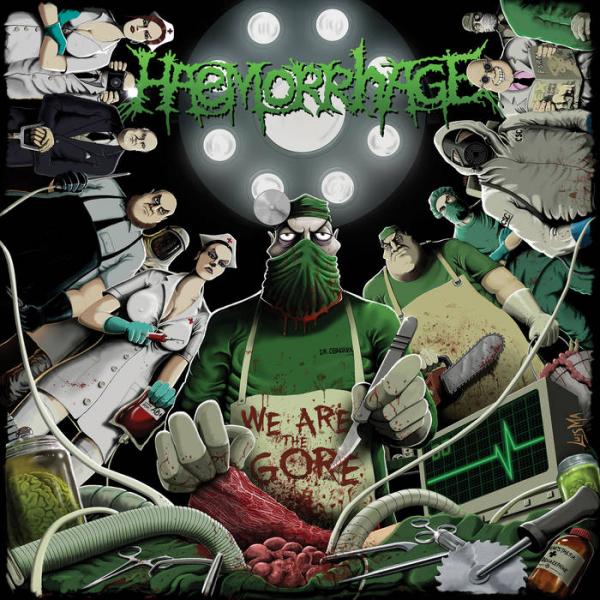The Medical Science of Death Metal

As you may already know, a lot of metal bands are obsessed with violent imagery. Look no further than the album covers of bands like Cannibal Corpse and Exhumed for the most gruesome depictions of gore and violence. The subgenre of death metal takes inspiration from horror and slasher films, and its lyrics tend to describe scenarios of murder and torture. However, the music sparked a fascination with what’s inside the human body. This has led to an interest in medical science, with bands singing about biology and pathology, some taking the themes more seriously than others. So how did this happen?
We begin with British death metal pioneers Carcass, when members cut out autopsy photos from medical journals and created a collage of corpses for the cover of their 1988 debut album Reek of Putrefaction. Songs like “Carbonized Eyesockets” and “Pungent Excruciation” went into nauseating detail about all matters of bodily fluids oozing out of multiple orifices. They repeated the process for their second album Symphonies of Sickness, released in 1989. In 1993, Carcass proved that they’re more than a one-note band by venturing into a more melodic style on their album Heartwork, writing songs about existentialism. More recently, Carcass has returned to their themes of pathology with their 2013 album Surgical Steel.
The early style of Carcass spawned a number of clone bands. It created a sub-subgenre called goregrind, which used the extreme speed and aggression of grindcore but threw out the political themes and replaced them with lyrics about mutilating the human body either out of malicious intent or for surgical reasons. Many musicians would scour medical journals, looking for the most disgusting of diseases, usually relating to genitals or the rectum. Another stylistic choice was to sing about forensics and medical malpractice. Bands like France’s Pulmonary Fibrosis and Japan’s Viscera Infest would write various songs about diseases and would use vomit-inducing photos of infections for their album covers; while bands like Sweden’s General Surgery and Spain’s Haemorrhage would take the gimmick further and perform live in blood-stained hospital gowns, surgical scrubs and nurse uniforms.
The gag hit its peak in 2001 with the formation of The County Medical Examiners, whose members actually all worked at the morgue or were studying medicine. Frontman Matt Widener (also known for being a member of bands like Cretin and Exhumed) briefly went by Dr. Morton Fairbanks as a pseudonym. In an interview with Pitchfork, Widener said he “wanted to take the Carcass clone phenomenon to its extreme conclusion.” Even the cover of the debut album Forensic Fugues and Medicolegal Medleys pays tribute to Carcass’ cover for Reek of Putrefaction. Bassist Dr. Guy Radcliffe was reportedly 60 years old when he joined the band, having no previous interest in death metal. The band has never performed live and band members used aliases so as to avoid compromising their medical careers. Their second album Olidous Operattas has a scratch-n-sniff on the CD face. The liner notes describe the smell as “corpse reek,” taken from a John Doe at the morgue.
A common argument against heavy metal is that it desensitizes listeners from the sight of death and gore; but that could be used to an advantage. An entire generation of death metal fans have likely flocked to medical schools, unafraid of encountering blood during their studies. So the next time you go in for surgery, don’t be surprised if your surgeon happens to be a metalhead. Hell, they might even put on some Carcass in the operating room.



